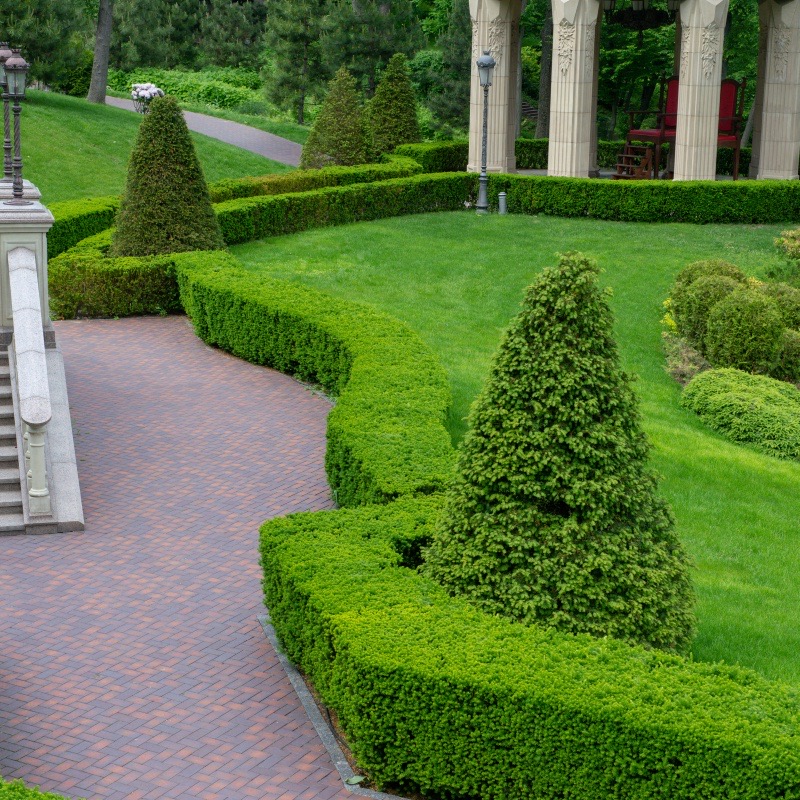Starting with Vision and Creation: Mastering Landscape Architecture

Designing a beautiful landscape can enhance not just your backyard, but also your entire home. It’s about establishing a synergistic balance between nature and aesthetic, transforming outdoor spaces into extensions of our living areas. Whether you are looking to create a peaceful retreat, a lively garden, or a dynamic outdoor entertaining space, understanding landscape design is essential to achieving your vision.
In this guide, we explore multiple facets of landscape design that address diverse needs and needs. From fresh ideas that can make a small yard feel spacious to tips for adding eco-friendly methods, this manual will help you chart the thrilling journey from idea to realization. We will investigate styles spanning contemporary to classic, highlight the importance of hardscaping, and offer tips on how to select the right plants for your distinct landscape. Whether you are a beginner or an experienced gardener, the rich world of landscape design holds endless possibilities for transforming your outdoor area into a mesmerizing haven.
Crucial Landscaping Ideas
Designing a stunning outdoor space begins with discovering the style that speaks to you and enhances your house. Contemporary and traditional landscaping each offer distinct aesthetics, so understanding the features of each can assist you create an informed choice. For favor neat lines and simplicity, modern landscaping typically includes hardscaping features and native plants. On the other hand, traditional landscaping tends to feature more organic shapes, colorful flowers, and timeless garden features that can foster a welcoming and friendly atmosphere.

An additional key factor is to think about practicality. How to alter your outdoor area with basic landscaping concepts can make a notable impact with minimal effort. Adding lighting to enhance your landscape design not only provides a warm ambiance during night gatherings but also enhances safety. Moreover, integrating water elements such as fountains or ponds can bring tranquility, providing a serene escape right in your backyard. landscaping Sarasota can work together to create an outdoor environment that feels harmonious and well-planned.
To those with limited yards, implementing landscape design tips for small spaces can optimize your outdoor area without feeling cramped. Selecting the most suitable plants for every landscape design style is important, as opting for low-maintenance options can make your garden more enjoyable without the stress of ongoing upkeep. Furthermore, utilizing creative front yard landscaping concepts can boost your home's curb appeal, setting the tone for your property while creating a lasting impact on guests.
Developing for Intent
While embarking on outdoor design project, it is crucial to begin by a specific goal in mind. Consider the ways you want to utilize your land. Do you want a tranquil sanctuary, an area for entertaining, or possibly a vibrant garden filled with producing plants? Defining a specific function for your design will shape your design choices, ensuring that every aspect contributes to the overall goal. Careful planning will create a harmonious and inviting outdoor environment tailored to your preferences and needs.
Then, think about the psychological effect you wish your design to produce. Hue, textures, and arrangement all play a key role in the way a space appears. Adding features that resonate with your individual style and elicit specific feelings can greatly enhance your outdoor experience. For example, using gentle colors and gentle curves may promote a sense of calm, whereas vibrant colors and angular patterns might energize your space. Through designing keeping emotion in mind, you can create an environment that truly reflects your essence.
In conclusion, take into account the concepts of eco-friendliness in your design. Eco-friendly landscape design not only supports the environment but can also lower maintenance and future costs. Selecting native vegetation, using water conservation techniques, and adding hardscaping features like permeable pavers can all help to a sustainable outdoor space. Designing with purpose includes being mindful of your ecological impact and creating a landscape that harmonizes with the surrounding environment, ensuring that your outdoor area stays beautiful and functional for a long time to follow.
Maximizing Exterior Aesthetics
Crafting exquisite outdoor environments necessitates a careful method to planning that harmonizes utility and aesthetics. One effective method is to include a variety of vegetation that deliver visual engagement throughout the year. Choosing the ideal plants for your yard theme not just elevates beauty but also supports indigenous habitats. Consider using indigenous flora, which thrive in your local environment and need minimal care, making available a sustainable option for a beautiful landscape.
In furthermore to vegetation, inserting hardscaping components like courtyards, paths, and ornamental masonry accents can significantly improve your open air beauty. These structures shape spaces and create focal points, improving the total attractiveness of your yard. Water features like waterfalls and lakes can add a tranquil aspect, while exterior elements such as canopies and overhangs provide height enhancement and can function as functional purposes like shelter.
Ultimately, strategic application of lighting can enhance your landscape styling and change your exterior environment into a nocturnal oasis. Thoughtfully placed illuminations can accentuate garden aspects and generate a cozy, welcoming ambiance. Utilizing landscape lights also showcases your styling but also prolongs the usability of your outdoor spaces into the night, enabling you to appreciate your stunning space at all hours.
